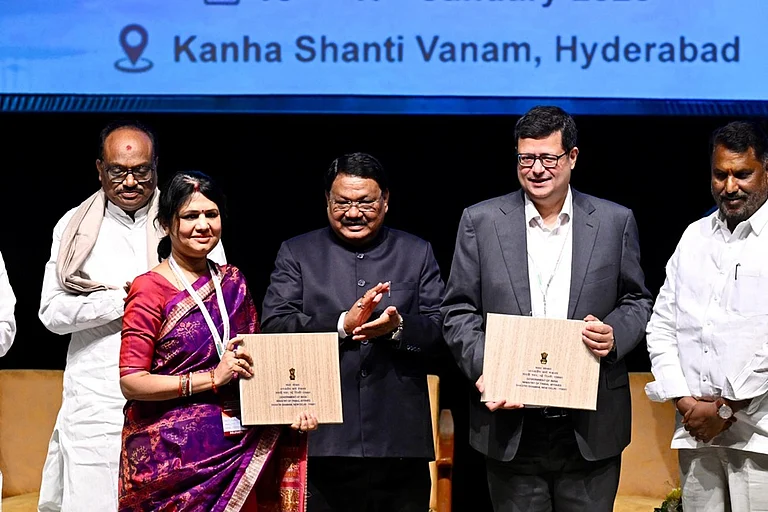This slim volume of short human stories, first published in The Indian Expressin the 1980s, is a treasure of perceptive observations and delightful anecdotes. JaswantSingh was still in the Opposition, as an ordinary member of Parliament, when he wrotethese pieces. We hope that when he goes back into oblivion (perhaps later than sooner) andreturns to his roots, he continues to write.
He has captured the essence of Bharat that is so different from India. Perhaps heshould have called this a village diary instead of a district diary. Alas, todaythe district is even further away from the village than it is from Delhi. The gap inperceptions and expectations is enormous and growing wider by the day. The districts arelike mini-Delhis all over the countryno permanence, no loyalties, a confusedidentity and little real power. They have more irritant value and are even more distantfrom the reality of poverty, corruption and injustice. In these stories, the author haslived through and shared with a cross-section of rural society the anxieties, the tensionand the social ceremonies that keep the village as it is today. The widening and indeedtragic gulf between urban and rural India emerges with striking clarity.
The intense, magnified happenings of everyday life in a village of western Rajasthanhave been caught with great sensitivity. Sadly, unless one has lived in a village, it maynot be possible to fully enjoy the depth and wisdom of these stories. With unforcedmodesty, Jaswant Singh is at the receiving end of lectures and words of advice from peoplewho are the salt of the earth and who have so much to say with dignity andsimplicityvoices that would otherwise never be heard.
Some insights one does expect from this politician at least when he says, ...itnever ceases to astonish us how those hands which have never touched the yoke speak withfeigned conviction and force about the plight, the difficulties, the concerns of thedistricts. This government could have better utilised his understanding and concernby making him a minister of rural development. Failing that, his colleagues would do wellto read this enlightening book.
While Jaswant Singh has admirably conveyed the zest and wisdom of village folk, hisaccount is a trifle oblivious of the divisions, conflicts and hardships that pervadepeoples lives in rural Rajasthan, especially those of the underprivileged. The bookis based on a simple dichotomy between Delhi and us in the district.
Except for passing references to social divisions (as in caste is an importantline of discrimination in our society), the characters appear to live in a largelycasteless, classless society. Reading between the lines, one guesses that most of thembelong, in fact, to the authors privileged entourage, described at one point asmy folk. Dalits and adivasis are rarely mentioned, except for a fond referenceto the moving bhajans sung by the Bheels of the village. Nor does the bookhave much to say on the oppression and deprivation endured by Rajasthani women.
This bias is particularly interesting if we note that much of the book was written inthe middle of a severe drought, in 1986-88. This was a time of extreme hardship for many,with near-famine conditions prevailing in large parts of the district.
The author himself mentions in passing that half of the districts population hadmigrated in search of livelihood at that time. Also, never to miss a barb at the Congress,Singh is quick to ask why the government fights shy of calling what has struck us inthe district (sic), famine. Except for these passing remarks, however, thedevastating effects of the famine are absent from the authors touching account ofvillage life.
In the light of these lacunae, the traditionalist message of the book is not entirelyconvincing. At one point, for instance, Singh mentions that in his home there isneither electricity nor running water, both of which absences I find blissfullyrestful. One wonders how this sounds to the person (presumably not Singh himself)who breaks his or her back fetching water and fuel for the author. Fortunately,Singhs folk clearly do not seem to share his traditionalist outlook, atleast not in these respects.
In fact, here again the author is at the receiving end of popular wisdom: Youmust understand, says Khem Singhji, all villages like electric lights...areyou not being selfish in resisting what so many others want? Interestingly, thispragmatism is often combined with a deep attachment to traditions of another sort, such asskillful craftsmanship and the notion that the mere presence of a policeman in thevillage (is) a slur on the good name of all. In this outlook, one gets a glimpse ofthe possibility of combining the best of tradition and modernity. Let us hope that thegenius of the Rajasthan people, so colourfully described in these essays, will be equal tothis challenge.
(Jean Dreze, honorary professor at Delhi School of Economics, is co-author withAmartya Sen of Hunger and Public Action; Bunker Roy is founder of the Social Work ResearchCentre in Tilonia.)























